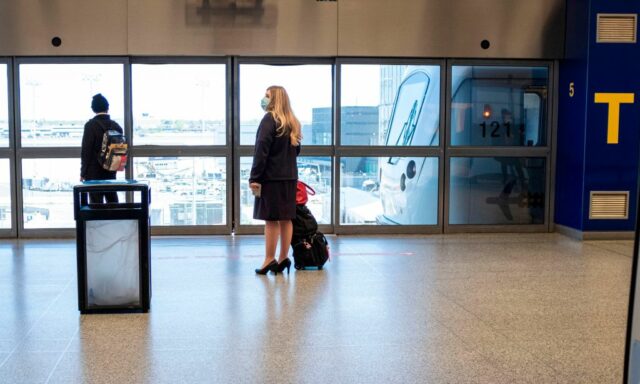
Companies with ideas for building high-tech barriers designed to keep New Yorkers from ending up on subway tracks have offered proposals for a pilot program to the MTA, agency officials said Thursday.
There’s still no word on when the potentially life-saving technology can be expected. The MTA has teased a three-station trial of such barriers since early 2022.
The barriers, which consist of railings or walls separating subway platforms from arriving and departing trains, would have automatic doors that open when train doors align with them in stations. They are meant to keep people from jumping, falling or being pushed to train tracks.
Similar barriers are in use in transit systems in Europe and Asia. New Yorkers can see them on the JFK AirTrain.
“We did receive vendor proposals last month for these new platform screen doors,” NYC Transit president Richard Davey told the City Council Thursday after being asked the status of the tryout.
The pilot program — expected at the No. 7 platform at Times Square, the Third Ave. station on the L line in Canarsie, Brooklyn and the Sutphin Blvd.-Archer Ave. platform on the E train in Jamaica, Queens — was first announced by MTA chair Janno Lieber in February 2022 following the death of Michelle Go, who was shoved to her death in front of an R train a month earlier at Times Square.
In the two years since Go’s death, multiple assaults, accidents and suicides have revived interest in the idea.
MTA officials remain reluctant to put a timeline on the project. An MTA spokesman declined to comment Thursday when asked how many vendors had responded to the agency’s request, and would not say when they might award a contract to install build platform barriers and doors.
Transit officials have repeatedly said that platform doors — in use in transit systems in Tokyo and Paris — are not well suited for the city’s subways. Davey expressed the same view Thursday.
“[The doors] are expensive and they won’t fit in every station, for a bunch of reasons,” he said.
“You don’t often see those retrofitted [to older systems],” Davey continued.
“They were part and parcel in Japan when they built those lines — or in Singapore, or the one line in London,” he added, a reference to London’s Jubilee Line, a recent extension of which is equipped with platform doors.
A feasibility study conducted by outside consultants in 2019 found that 344 of the subway’s 472 stations have platforms that could not support screen doors — meaning less than a third of the system could use the technology.
Davey echoed the report’s assessment.
“There are a number of stations where [due to] the length, for example, or the curvature of the stations, we won’t be able to install them,” he said. “We need to find other solutions.”
To that end, the MTA installed a series of decidedly low-tech barriers at three stations earlier this year.
Those barriers — fixed metal gates set up on platforms with gaps where a subway’s doors should be — were installed earlier this year at the W. 191st St. station on the No. 1 line in upper Manhattan, the Clark St. station on the Nos. 2 and 3 in Downtown Brooklyn, and the Morgan Ave. station in East Williamsburg on the L train.
A fourth station, the Fifth Ave. stop on the No. 7 in Midtown, is expected to get the low-tech barriers before the end of the month.





